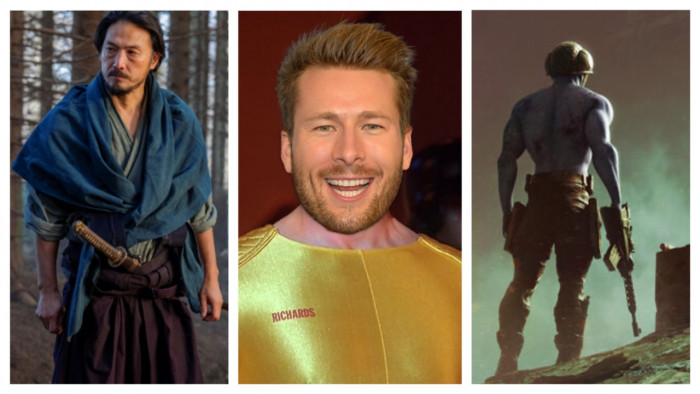There have been many words written about war, but few read anything like Catch-22. Michael Hogan celebrates 50 years of the most singular — and brilliant — war novel of all time.
There was only one catch, and that was Catch-22, which specified that a concern for one’s safety in the face of dangers that were real and immediate was the process of a rational mind. Orr was crazy and could be grounded. All he had to do was ask; and as soon as he did, he would no longer be crazy and would have to fly more missions. Orr would be crazy to fly more missions and sane if he didn’t, but if he were sane he had to fly them. If he flew them he was crazy and didn’t have to; but if he didn’t want to he was sane and had to.
It should have been called Catch-18. In 1961, debut novelist Joseph Heller, then 38, delivered his meaty 750-page manuscript — which had taken eight years to write — with Catch-18 typed on the title page. The publishers asked him to change the number to avoid confusion with another war novel out that year, Mila 18 by the best-selling Leon Uris — a story set in German-occupied Poland and named after the Warsaw HQ of the Jewish resistance. Heller was happy to do so. His number had been pretty random, like the army rule to which it referred.
He suggested Catch-11, but because Rat Pack film Ocean’s 11 was still in cinemas, that wouldn’t do either. Catch-17 was Heller’s next offer. But no, that could get confused with Stalag 17, which was also about American airmen in the Second World War. Catch-14? The publisher thought 14 wasn’t “a funny number”.
They eventually settled on Catch-22. Heller liked the repetition of “2” because it gave a sense of déjà vu, rather like events in his novel.
Catch-22 might have been fifth choice, but that didn’t stop it entering the English language to describe any absurd choice or no-win situation. Neither did it stop the novel, now celebrating its 50th birthday, becoming a classic.
THEATRE OF WAR
Heller was born in 1923 to poor Russian-Jewish immigrant parents in Brooklyn, New York. Leaving school during the Depression, he spent a year drifting between dead-end jobs before the experience that would change his life, not to mention transform modern literature. Aged 19, he joined the US Army Air Corps.
Towards the end of the Second World War, training complete, he was sent to the Italian front, where he flew 60 combat missions as a B-25 bombardier — just like Catch-22’s antihero Captain John Yossarian. Many of his own adventures, as well as those of his comrades, would end up in the novel. As Heller’s daughter Erica recalls: “He never talked about his war experiences to anybody. If people asked, he’d just say, ‘Read the book.’” Like Yossarian, his creator insisted he was no hero, despite being discharged in 1945 as a highly-decorated first lieutenant.
After the war, America’s GI Bill provided education for veterans and Heller took advantage, earning two degrees in English. He became an advertising copywriter — partial to a Mad Men-style three-martini lunch — while slaving over his own fiction in his spare time.
Heller never started work on a story until he’d dreamed up both the first and last lines (“He liked to know his way in and way out,” says Erica). Early one morning in 1953, he came up with some opening lines: “It was love at first sight. The first time Yossarian saw the chaplain he fell madly in love with him.” His next challenge was coming up with the rest. That turned out to be the subversively satirical account of Yossarian’s attempts to survive the madness of military life.
Heller’s masterpiece didn’t come easily. He spent a year planning it on index cards, which soon filled a shoebox, then seven more writing and painstakingly reworking it. He missed his publisher’s deadline by the mere margin of five years. The book’s style mirrors the folly and frustrations of war. It’s heavier on anecdote than action. It jumps around in time and is populated by cartoonish characters. There are few heart-pounding passages about death and glory, and lots about suffocating red-tape or boredom on the airbase. Heart-warming camaraderie is replaced by sarcastic repartee, insubordination, scams, pranks and petty feuds. It’s not what readers traditionally expect from a war novel, but is it the most realistic?
Andy McNab, the SAS operative turned writer, certainly thinks so. “That’s why it’s my favourite war novel — it perfectly captures the bizarre aspects of war,” he says. “The black humour, bureaucracy and warped logic that only makes sense when you’re there. During one SAS mission, for example, we needed extra sandbags in our bunker to get elevation for a machine gun. We had to ask a Royal engineer to do a health and safety inspection of our ladder — because obviously, you might hurt yourself falling off. That’d be your main worry during a firefight.”
McNab’s favourite Catch-22 character is Milo Minderbinder — the mess officer who runs the black market on base and even bombs his own men for profit. “For him, war is just business, and I met plenty of Milos in my time,” McNab recalls. “There are always guys on the make, even if it’s just dealing porn DVDs or organising wagons to get the lads into town.
“In Oman, around 1970, we had guys training and fighting alongside the indigenous forces. They set up two rifle companies, each of 120 men, that were totally non-existent, but they were getting food, weapons, ammo and, most importantly, they were getting paid.
The British lads kept the wages and because it was a covert war, they just wrote reports about how well these rifle companies were doing against Yemenese insurgents. No one was any wiser. It went on for a year, passing around documentation as if they were real troops and pocketing the money. Nothing changes. That stuff still goes on.”
WHAT’S THE CATCH?
When the book was finally published in 1961, it met a mixed reception. Some readers, like Yossarian, fell in love at first sight. Yet for every rave review (“A wild, moving, shocking, hilarious, raging, exhilarating, giant rollercoaster of a book,” said the New York Herald Tribune), another critic hated it. “It doesn’t even seem to be written,” sneered The New Yorker. “Instead, it gives the impression of having been shouted on to paper.”
It wasn’t until it came out in paperback that Catch-22, well, caught on. It was the early days of American involvement in Vietnam, and the mid-Sixties baby-boomers — many facing the prospect of being forced to fight a war they didn’t believe in — embraced Catch-22’s anti-authority message. History had caught up with the book, which suddenly captured the mood of a generation. Stickers and T-shirts declaring ‘Yossarian Lives’ started to appear. Peace demonstrators sported camo jackets with Yossarian name tags and a well-thumbed copy of Catch-22 in the pocket. Newsweek reported: “The novel inspires evangelical fervour and has swept the cocktail-party circuit, where it’s the hottest topic going.”
The rights were snapped up by Paramount for a film adaptation directed by Mike Nichols (The Graduate). It’s a cult gem but was overshadowed by the ostensibly similar M*A*S*H, which coincidentally came out the same year — like the title’s teething troubles all over again.
But by now, Catch-22 didn’t need a film to make it famous. The book had a life of its own. It went from underground success to bestseller, shifting 10 million copies in the US alone. “It’s taught in schools now and even studied at the Air Force Academy,” laughs Erica Heller. “And hey, few of us make it into the dictionary.” Harper Lee said Catch-22 is “the only war novel I’ve read that makes any sense”. Norman Mailer called it “the rock and roll of novels”. Like a band, Heller faced difficult second album syndrome. He called himself “a chronic fiddler”, so switched between writing fiction, plays and films (including uncredited script work on 1967 Bond spoof Casino Royale). He took more than a decade to produce his follow-up novel, the underrated Something Happened. When people said he’d never produced anything as good as Catch-22, Heller would simply reply, “Who has?”
In the Eighties, he fell seriously ill with a nerve disorder that left him totally paralysed. Regular bedside visitors included his card-playing pals from the New York social circuit: comedian Mel Brooks, actor Dustin Hoffman and The Godfather author Mario Puzo. Heller eventually recovered, married his nurse and survived for another decade, before dying of a heart attack aged 76 in his native New York state. He might be gone, but Yossarian lives on.
50th anniversary editions are available now, priced £18.99/£6.99 (Vintage Classics)Erica Heller’s memoir Yossarian Slept Here (Vintage, £8.99) and Dead Centre by Andy McNab (Bantam Press, £18.99) are also out now










